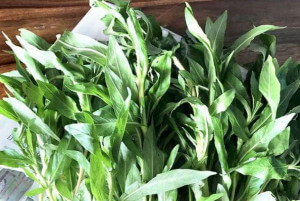Medical Research Corroborates Usefulness of Kulekhara in Combating Anaemia
Kulekhara (H.Spinosa) is considered an all-rounder in the medicine chest of Ayurveda. The parts of this plant are widely used in traditional medicine for the treatment of various disorders, which include anasaraca, diseases of the urinogenital tract, dropsy from chronic Bright’s disease, hyperdipsia, vesicle calculi, flatulence, diarrhoea, dysentery, leukorrhea, gonorrhea, asthma, blood diseases, gastric diseases, inflammation, rheumatism, painful micturition and menorrhagea.

In Ayurveda, H. Spinosa(Kulekhara) is described as Ikshura, Ikshugandha, and Kokilasha “having eyes like Kokila or the Indian cuckoo. It is believed to be indigenous to India from the Himalayas to Srilanka, Myanmar, Malaysia, and Nepal. In Eastern India, it is popularly known as Kulekhara.
In medical science, Haematopoiesis is the process of the formation of blood cellular components. All cellular blood components are derived from hematopoietic stem cells. In a healthy adult person, millions of new blood cells are produced daily in order to maintain steady-state levels in the peripheral circulation.
Hematopoietic activity of H. spinosa was evaluated using cyclophosphamide-induced anaemia in rats. It was found that Chloroform extract of the leaves at both 250 and 500 mg/kg doses significantly improves RBC and haemoglobin counts for 7 days and cyclophosphamide-induced bone marrow suppression after 21 days of treatment. It is also found that it increases bone marrow cellularity. [1]
What was always known to Ayurveda is now being validated by modern science. More research is on the anvil to further confirm the findings of H. Spinosa (Kulekhara) being a potent herb against anaemia.
Branolia’s Kulleron brings Kulekhara to help fight anaemia and improve general health. In villages across West Bengal and other eastern Indian States, Kulekhara has been used for ages to increase RBC count in blood.
Traditional knowledge validated by modern science is giving Kulekhara a stature of being the foot soldier fighting at the frontline in the nation’s war against anaemia.
Reference:
1. Kshirsagar AD, Ingale KD, Vyawahare NS , Thorve VS, Hygrophila spinosa: A comprehensive review, Indian Journal of Pharmacology, 2012 Sept-Oct 44(5): 639-642
[supsystic-social-sharing id="1"]

One thought on “Medical Research Corroborates Usefulness of Kulekhara in Combating Anaemia”